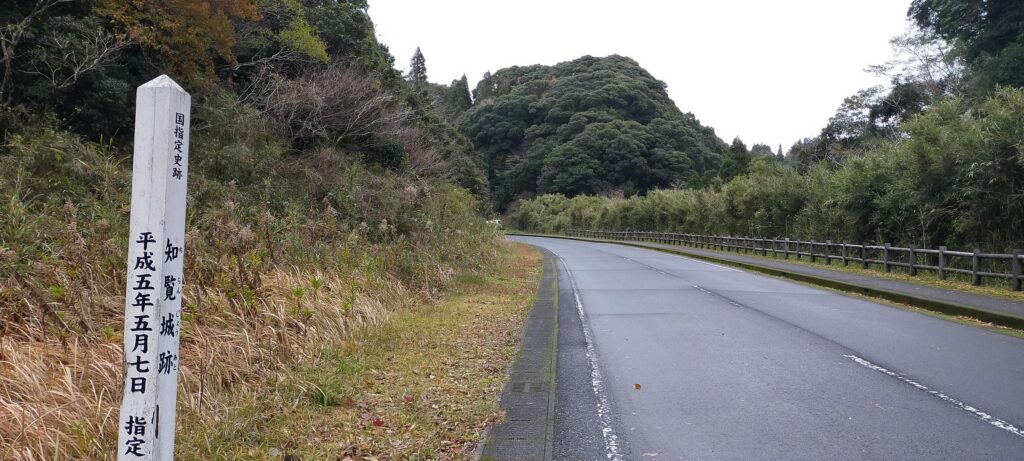Location and History
Many attractions of Chiran
Chiran area of Minami-Kyushu City in Kagoshima Prefecture has many attractions. First, it is known for Chiran tea leaves, which is planted on Shirasu Plateau enriched with ashes of the volcanic zone in the southern Kyushu Region, largely covering the area. The city recently became the largest producer of Japanese tea in the nation in 2017.
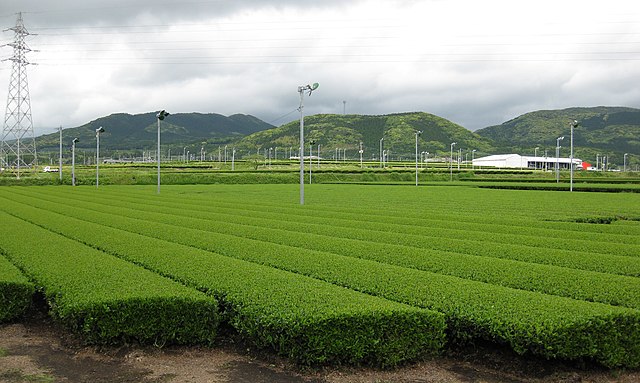
Second, the area also became popular with its history of the Kamikaze corps of Chiran Airport. The history is kind of a tragedy, however, because it was on a plateau with good wind direction, the area was suitable for building the airport. It had originally been used for the normal Japanese Army air corps practices, but was eventually turned into a base for Kamikaze due to the crucial situation of the final stage of WWII.

Thirdly, people often visit Chiran Samurai Residences which are located in the plains at the foot of the plateau. The residences have a traditional atmosphere with many gardens and some remaining buildings. Their main street still looks like the original one in the Edo Period. They were originally built in the 17th Century by the Sata Clan which was a relative of the Shimazu Clan, the lord of Satsuma Province including the Chiran area. The Satsuma Domain led by the Shimazu Clan was based in Kagoshima Castle far from Chiran. Other domains at that time usually brought their retainers together in their home base. However, the Satsuma Domain had a unique system called Tojo or the Outer Castles. It refers to the domain sending many of its retainers to their own sites and letting them govern and protect it by themselves. Chiran Samurai Residences were one of the Outer Castles, which was also called Chiran Roku.
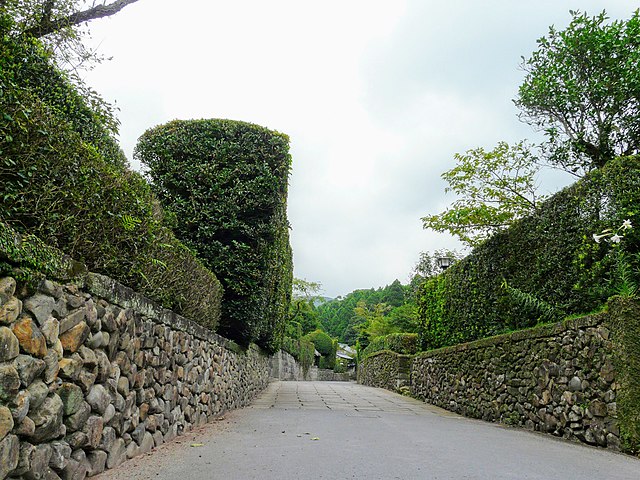


Castle is built using Shirasu Plataeu
Finally, Chiran Castle may be less popular than the three attractions above, but the Sata Clan had originally lived in the castle before they were moved to the residences at the foot of the plateau. It was a kind of mountain castle which was a common way to live and protect themselves as warriors until the 16th Century during the Sengoku Period. However, the castle was built with a very unique method using the special conditions the Chiran area had. It was located on the edge of the Shirasu Plateau which looks like a cove. A plateau made of volcanic ash is fragile so that its edge can become a cliff. Soil of the plateau is also easy to process, that way, the builders of Chiran Castle made high walls and deep moats easily. As a result, the enclosures of the castle looked like several huge columns at the edge.
The location of the castle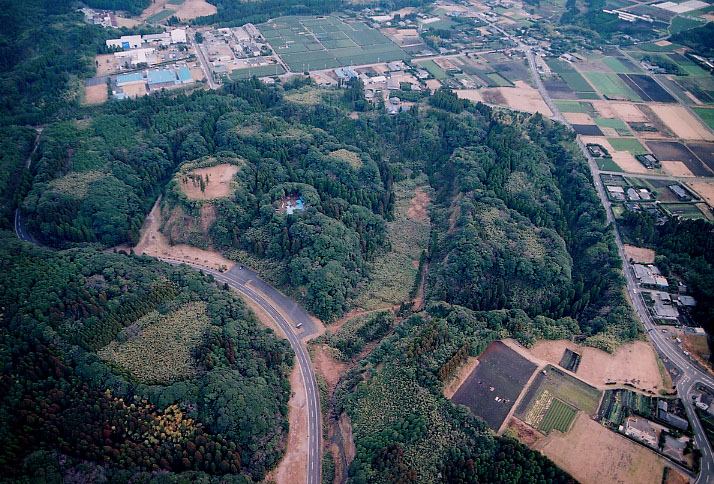
Chiran Castle had four primary enclosures such as the Main Enclosure in the center and several sub enclosures around. Each enclosure was independent, surrounded by dry moats which were over 25m deep. If enemies wanted to attack the castle even from the plateau which was the same level as the top of the castle, they were prevented by the deep dry moats from attacking directly. They were eventually also counterattacked by the defenders from over 25m above. Some primary enclosures also had artificial defense system for their entrances , called Masugata. It refers to a square space at the entrance, where the route to the inside of the enclosure is not straight intentionally.
The relief map arountd the castle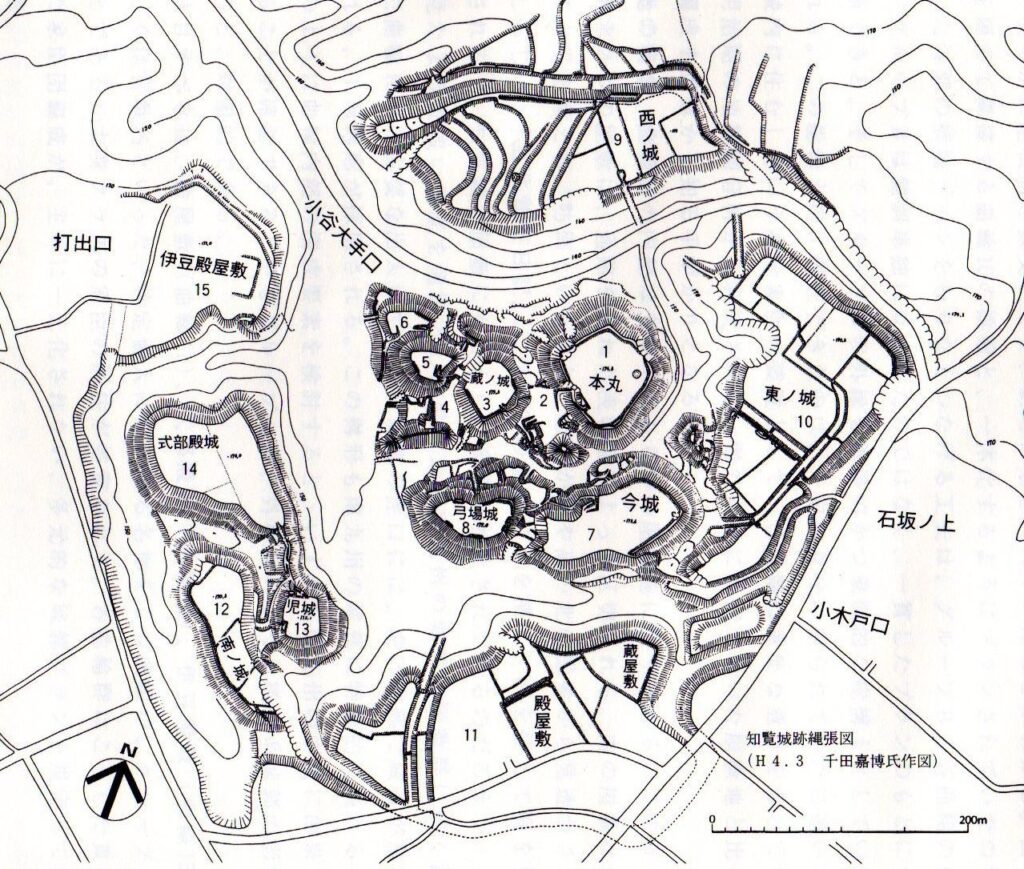
History of Castle
The castle is said to be first built by the Sata Clan in the 14th Century. After that, the Ijuin Clan took the Chiran area including this castle from the Sata Clan in the 15th Century, but their master, the Shimazu Clan gave it back to the Sata Clan. In 1591, the clan was punished due to being against the Act to Ban Piracy and was banished from the castle again, but came back to the castle in 1610. Finally, the castle was burned down by an accidental fire in the same period and the clan moved to the residences at the foot of the plateau following the domain’s policy. The castle was eventually abandoned. However, the clan seemed to maintain the castle ruins in some ways because ceramic-ware in the Edo Period after the abandonment was found by the excavation team.
